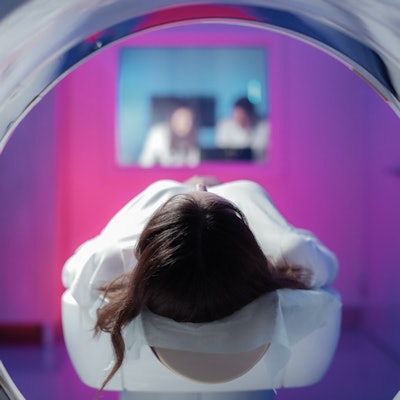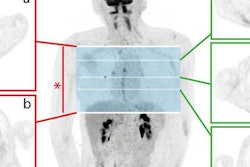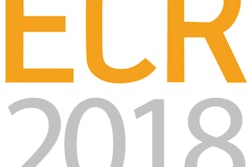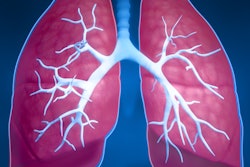
Increasing the matrix size for high-resolution chest CT can boost image quality for evaluating pulmonary nodules without leading to a substantial rise in the number of images to interpret, according to a study published on 29 April in the European Journal of Radiology.
Ultrahigh-resolution CT (UHRCT) can burden the radiology department's workflow because it produces more images that must be interpreted; this new study's findings suggest that there's a way to more easily incorporate the technology into a department's workflow, wrote a team led by Dr. Mitsuko Tsubamoto of Osaka University Graduate School of Medicine.
"[Our study] suggests that ultrahigh-resolution CT can be used to improve image quality without increasing the amount of data," the group wrote.
UHRCT's advantages include better evaluation of in-stent stenosis, pulmonary disease, and temporal bones. It features a smaller detector and x-ray tube than conventional CT scanners; matrix sizes include 512 x 512, 1024 x 1024, and 2048 x 2048.
"Ultrahigh-resolution CT has been reported to provide anatomical details with the twice the precision of conventional CT," the group noted. "[Its use] could reflect a ground-breaking change in the clinical use of CT."
The team used a commercially available UHRCT scanner (Aquilion Precision, Canon Medical Systems) and investigated whether a protocol could be developed that would take advantage of the higher in-plane spatial resolution of the technology without unduly increasing data. To do this, the researchers compared two reconstruction protocols for 89 CT images visualizing lung nodules of more than 6 mm and less than 30 mm (both protocols used a 34.5-cm field of view):
- 0.5-mm thickness, 512 x 512 matrix pixels, and
- 2-mm thickness, 1024 x 1024 matrix pixels.
Three chest radiologists used a five-point scale (1 = far inferior, 2 = inferior, 3 = almost equal, 4 = superior, and 5 = far superior) to assess the images by protocol for certain nodule characteristics.
Tsubamoto and colleagues found that readers rated the higher matrix protocol better than the lower one for evaluating pulmonary nodules (p < 0.0001), although image noise was higher (p < 0.0001).
| Ultrahigh-resolution CT protocol performance ratings for visualizing lung nodules | ||
| CT findings | 0.5-mm thickness, 512 x 512 protocol | 2-mm thickness, 1024 x 1024 protocol |
| Nodule margin | 3 | 4.1 |
| Lobulation | 3 | 4.1 |
| Pleural indentation | 3 | 3.7 |
| Spiculation | 3 | 4 |
| Linear margin | 3 | 4.2 |
| Ground glass opacities | 3 | 4 |
| Solid component | 3 | 3.8 |
| Air bronchograms | 3 | 4.1 |
| Vessels | 3 | 4.1 |
| Bronchioles | 3 | 4 |
| Image noise | 3 | 2.9 |
| Overall image quality | 3 | 4.1 |
The increased noise may not be a deal-breaker, since adjusting for it could be easier than having to interpret more slices, according to the group.
"The use of a [2 mm] 1024 x 1024 protocol does not increase the amount of images and allows better assessment of pulmonary nodules, despite noise increase," the team concluded.



















